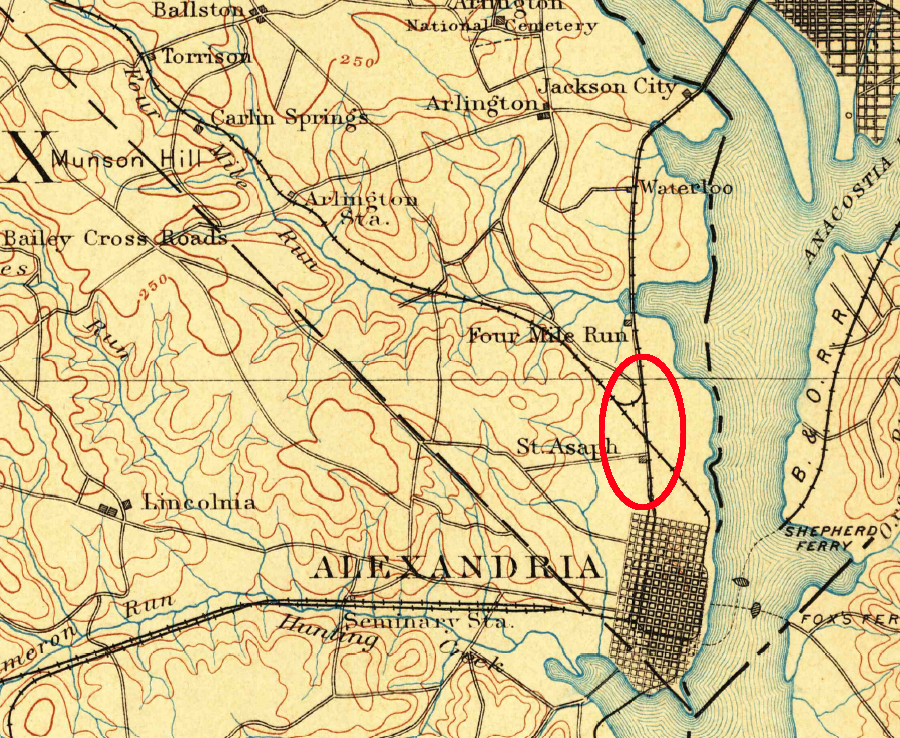
site of future Potomac Yard in 1897
Source: US Geological Survey (USGS), Alexandria, VA 1:125,000 topographic quadrangle (1897)`

site of future Potomac Yard in 1897
Source: US Geological Survey (USGS), Alexandria, VA 1:125,000 topographic quadrangle (1897)`
The Pennsylvania Railroad, the Atlantic Coast Line Railroad, the Southern Railway, the Chesapeake and Ohio Railway, the Seaboard Air Line Railway, and the Baltimore and Ohio Railroad served Alexandria at the start of the 20th Century. To consolidate the five separate passenger terminals in town and create one combined yard to interchange freight cars, the six railroads formed the Richmond-Washington Company in 1901.
The joint ownership reflected the intent for the six railroads to partner and interchange traffic, rather than exclude each other as competitors from freight and passenger business. Control of the Washington Southern Railway, which owned the track north of Alexandria and across the Potomac River on Long Bridge, was transferred to the Richmond-Washington Company.
The six railroads also acquired control of the Richmond, Fredericksburg & Potomac (RF&P) Railroad, whose track bringing trains north from Richmond stopped at Quantico. In 1920, the Washington Southern Railway was merged into the Richmond, Fredericksburg & Potomac Railroad.
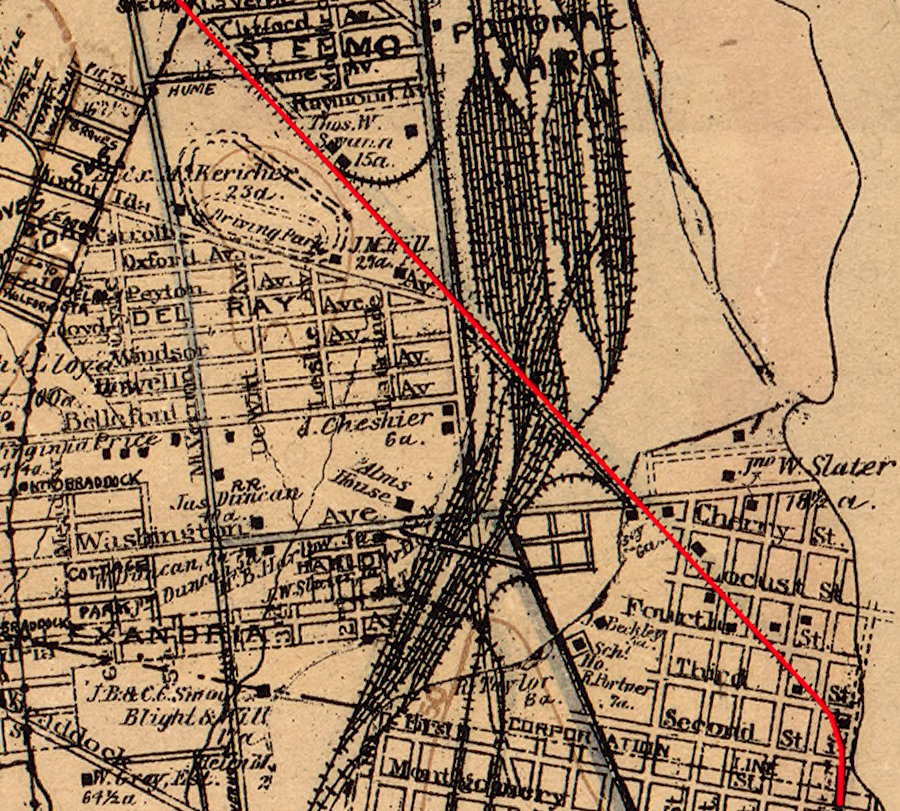
the Great Falls and Washington and Old Dominion Railroad (red) crossed Potomac Yard on a trestle, starting in 1906
Source: Library of Congress, Baist's map of the vicinity of Washington D.C (1918)
The Washington Southern Railway Company completed Alexandria Station, the joint railroad passenger terminal, in 1905. It served passengers on the Richmond, Fredericksburg & Potomac Railroad, the Chesapeake & Ohio Railway, and the Southern Railway. The station was in Alexandria County until the city annexed it in 1915.
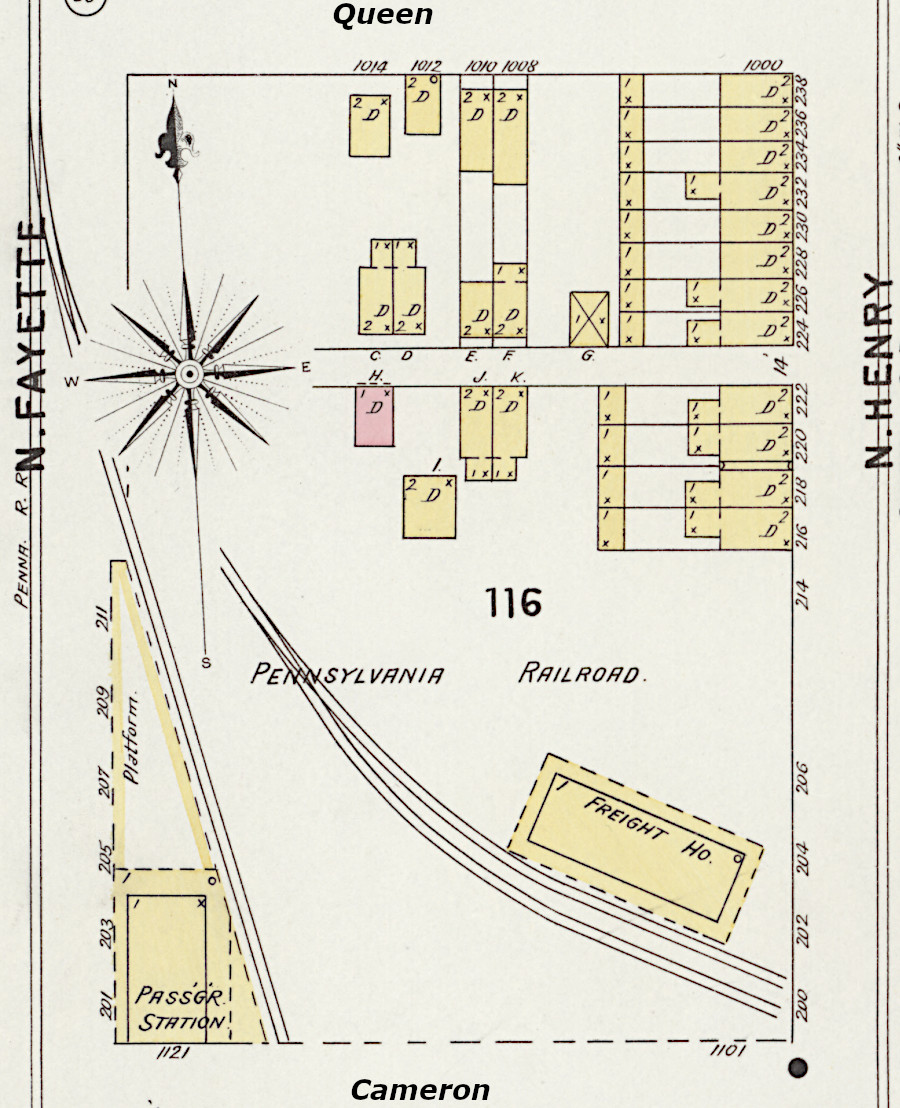
until Alexandria Station opened in 1905, the Pennsylvania and other railroads had separate stations
Source: Library of Congress, Sanborn Fire Insurance Map from Alexandria, Independent Cities, Virginia (1896)
Today Alexandria Station still serves Amtrak and Virginia Railway Express passengers, and a Metrorail station is adjacent to Alexandria Union Station. Railroad cooperation also led to completion of a new railroad bridge over the Potomac River in 1904 and opening a new Union Station in Washington, DC for passenger travel in 1907.1
"Blog - History of Alexandria Station," Virginia Railway Express (VRE), https://www.vre.org/blog-history-of-alexandria-station/; "Inventory of the Richmond, Fredericksburg, and Potomac Railroad, Records, 1834-1997," Library of Virginia, December 18, 2000, https://www.lva.virginia.gov/findaid/36460.htm; Bob Cohen, "Timeline of Washington, DC Railroad History," District of Columbia Chapter, National Railway Historical Society, https://dcnrhs.org/dcnrhs-articles/timeline-of-washington-dc-railroad-history/; Jay Roberts, "Rails in the Seaport: A Brief Look at the History of Railroads and Their Tracks in Alexandria," Jay's Jottings blog, January 28, 2015, https://jay.typepad.com/william_jay/2015/01/rails-in-the-seaport-a-brief-look-at-the-history-of-railroads-and-their-tracks-in-alexandria.html (last checked January 6, 2025)
Creation of Potomac Yard allowed removal of removal of the railroad yard tracks at what is now the National Mall. The Southern Railway was able to to stop using Cameron Yards, built in Alexandria in 1901, as a site for switching cars. Cameron Yards remained in business, but only as a repair facility. The ice companies, which were needed to keep fruit cold while in transit, moved their operations from Cameron Yards to Potomac Yard. Today Cameron Yards is the location of the Patent and Trademark Office.1
Bob Cohen, "Timeline of Washington, DC Railroad History," District of Columbia Chapter, National Railway Historical Society, https://dcnrhs.org/dcnrhs-articles/timeline-of-washington-dc-railroad-history/; Jay Roberts, "Rails in the Seaport: A Brief Look at the History of Railroads and Their Tracks in Alexandria," Jay's Jottings blog, January 28, 2015, https://jay.typepad.com/william_jay/2015/01/rails-in-the-seaport-a-brief-look-at-the-history-of-railroads-and-their-tracks-in-alexandria.html; "Archaeology in Alexandria's West End: Investigations at the United States Patent and Trademark Office Relocation Site," Alexandria Archeology, https://media.alexandriava.gov/docs-archives/historic/info/archaeology/summarywilliamsusptoax189.pdf
(last checked January 7, 2025)
The freight facility developed by the six railroads, Potomac Yard, opened in 1906. Intechange agreements at Potomac Yard allowed the Baltimore and Ohio Railroad to shut down its expensive car float operations, opened in 1874, from Shepherd's Landing to the shoreline of Alexandria. However, a Shepherd’s Landing Bridge was constructed in 1942 due to increased train traffic in World War II. That bridge was in use until 1945, and removed in 1947.1
"The history of Baltimore & Ohio’s Shepherd Branch," Trains Magazine, December 14, 2001, https://www.trains.com/ctr/railroads/railroad-operations/the-history-of-baltimore-and-ohios-shepherd-branch/ (last checked January 6, 2025)
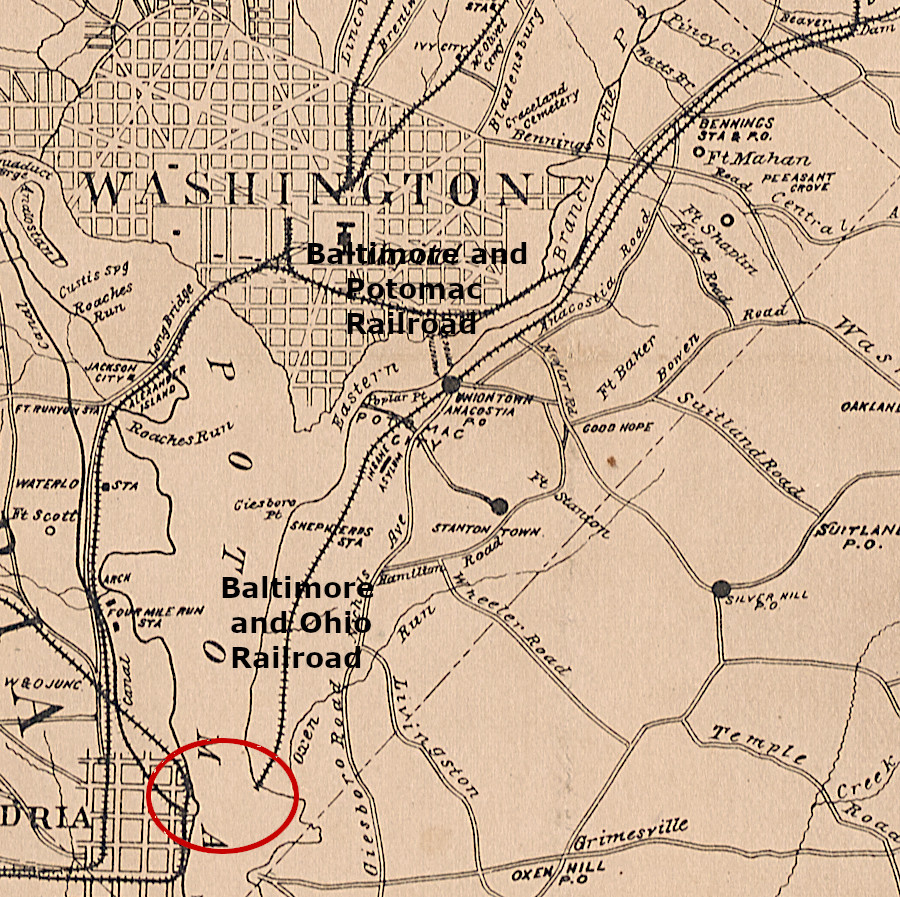
the Baltimore and Ohio Railroad built a branch line at Shepherds Landing and floated rail cars to Alexandria, after the Pennsylvania Railroad blocked acces via Long Bridge
Source: DC Public Library, Morrison's map of the country about Washington
The new tracks at Potomac Yard blocked trains from going directly from the Alexandria waterfront on the Southern Railway line leading to Leesburg and Bluemont. The solution was to build a bridge for those trains to pass over Potomac Yard.1 ????
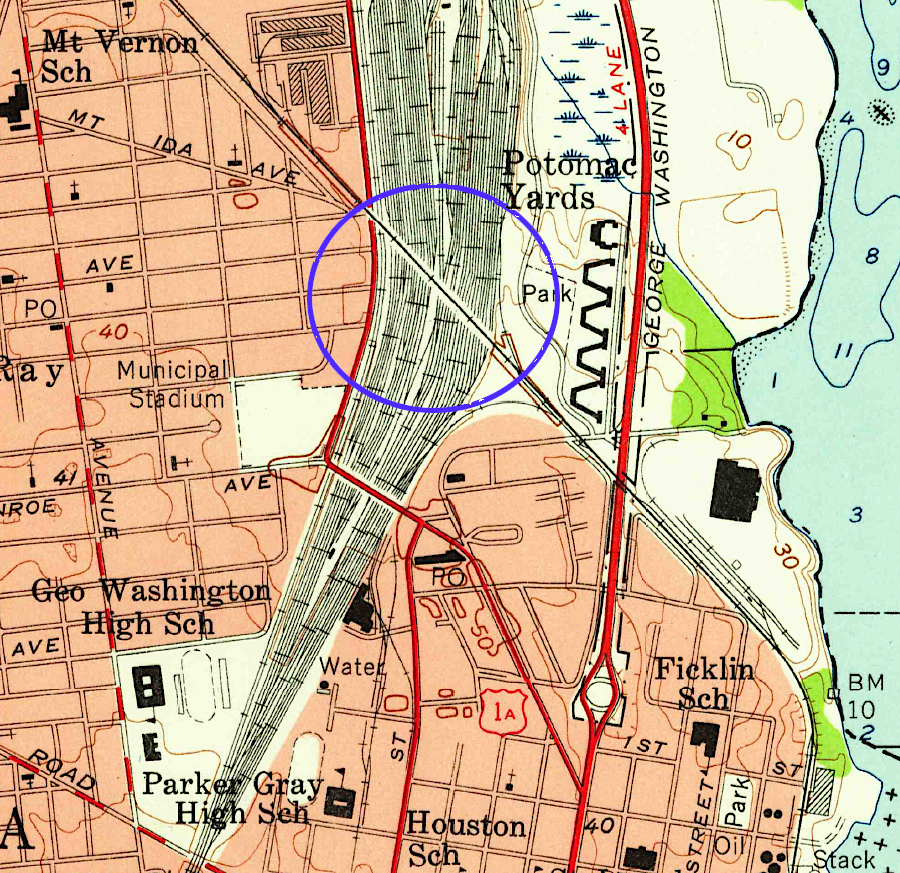
a bridge over the tracks in Potomac Yard allowed trains to go from the Alexandria waterfront to Leesburg
Source: US Geological Survey (USGS), Alexandria VA 1:24,000 topographic quadrangle (1956)
Potomac Yard was the largest U.S. rail freight classification yard in the United States at the time, covering 450 acres. Poles and catenaries allowed the electricity-powered Pennsylvania Railroad locomotives to reach Potomac Yard.
Trains arrived from the north and south with cars which needed to be delivered to different destinations. Steam-powered and electric locomotives were detached and cars were rearranged ("switched") to form new trains. Cars were classified based on contents and destination so they could be lined up behind the locomotives in a logical sequence for delivery.
The Mutual Ice Company produced as much as 700 tons of ice daily, which was loaded into cars at Potomac Yard to preserve perishable vegetables, fruit, and other products. That operation continued until refrigerated cars eliminated the need, and the Mutual Ice Company closed in 1969.1
"127-0172 Main Street Station," National Register of Historic Places nomination form, Virginia Department of Historic Resources, October 15, 1970, https://www.dhr.virginia.gov/historic-registers/127-0172/; "Building Potomac Yard," City of Alexandria, https://www.alexandriava.gov/uploadedFiles/historic/info/archaeology/TrailSignPotomacYardBuilding.pdf (last checked July 16, 2020)
The switching process relied upon gravity, and the topography of the site was altered when the yard was established. An archeological report later concluded that a layer of cinder ballast two feet thick, and in pkaces as much as 15 feet thick, had ben used to help level the ground and:1
"The Archaeological Investigation of the Former Preston Plantation and Alexandria Canal at Potomac Yard," International Archaeological Consultants, 1996, Public Summary, https://www.alexandriava.gov/uploadedFiles/historic/info/archaeology/SiteReportAdams1996PotomacYardPrestonPlantation.pdf (last checked July 17, 2020
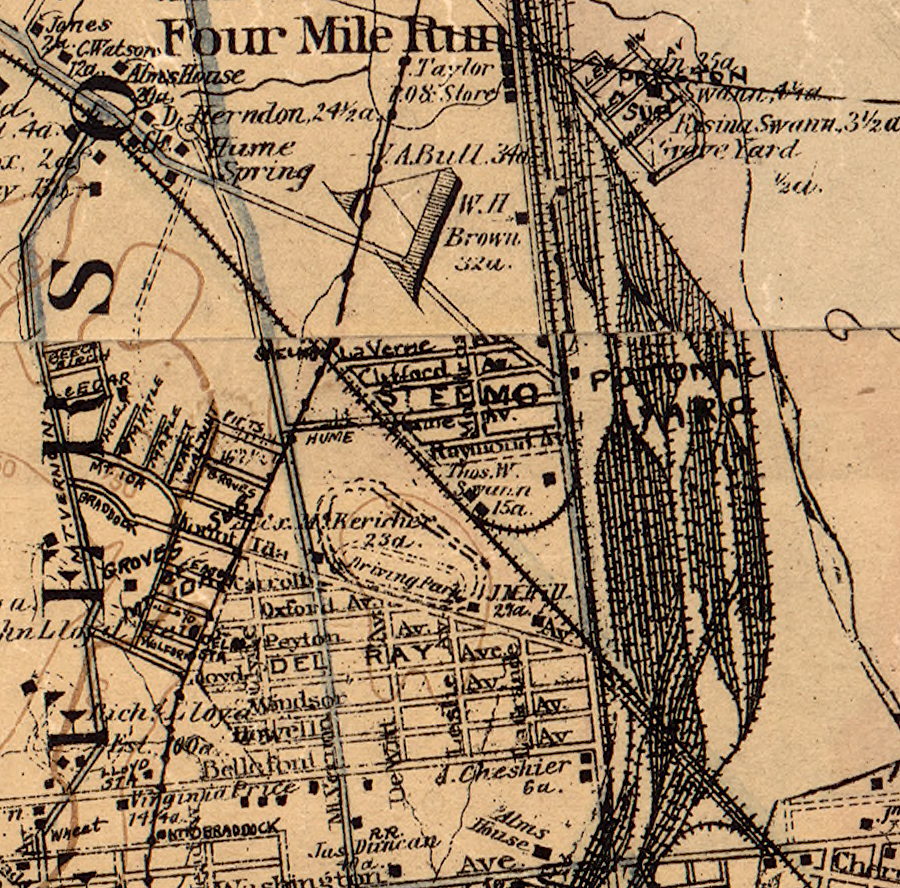
Potomac Yard in 1918
Source: Library of Congress, Baist's map of the vicinity of Washington D.C (1918)
Rail cars in an arriving train were hauled up a "hump" or hill built in the yard. At the top, workers known as "car cutters" separated individual cars, and they rolled down the hill towards a network of tracks. Brakemen on top of each car managed the speed. On the ground, Potomac Yard personnel moved track switches in order to send each car onto the desired track.
There was one hump for assembling southbound trains, and a second hump for northbound trains. Often one car at a time, arriving trains were disassembled and new trains were organized to take freight cars to the next destination.
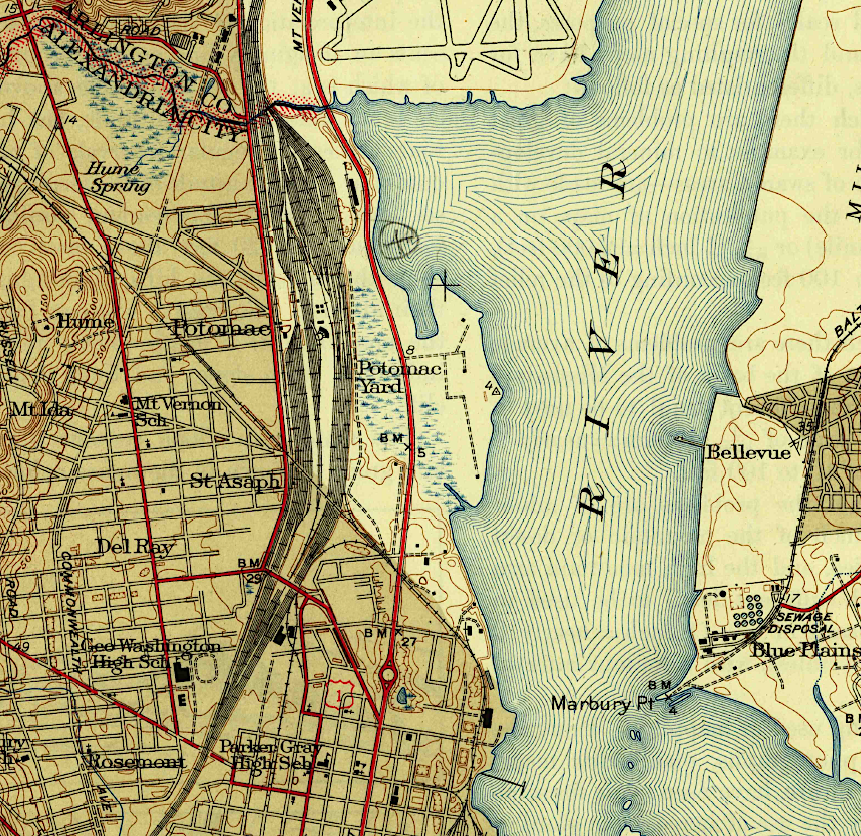
Potomac Yard in 1945
Source: US Geological Survey (USGS), Alexandria, VA 1:31.680 topographic quadrangle (1945)
Over time, the manual procedures were replaced with automated systems. Retarders on the track slowed cars rolling down the hump, reducing the safety risks of brakemen riding on the moving cars. By the 1960's, a few workers in a tower in the middle of the yard could control much of the switching process.1
"The Rail Yard Hump," City of Alexandria, https://www.alexandriava.gov/uploadedFiles/historic/info/archaeology/TrailSignPotomacYardsRailHump.pdf (last checked July 16, 2020)
Starting in the 1970's, railroads reduced the amount of freight moving through Washington DC. Narrow tunnels, Amtrak passenger trains, and a train collision north of Union Station in 1987 created a chokepoint that delayed delivery. Virginia built an "inland port" at Front Royal in 1989, and it successfully diverted traffic onto the old Shenandoah Valley Railroad route which Norfolk Southern used. The demand for multiple railroads to operate a classification yard dropped, and the facility closed in 1992.1
"Potomac Yard in Transition," City of Alexandria, https://www.alexandriava.gov/uploadedFiles/historic/info/archaeology/TrailSignPotomacYardsTransition.pdf (last checked July 16, 2020)
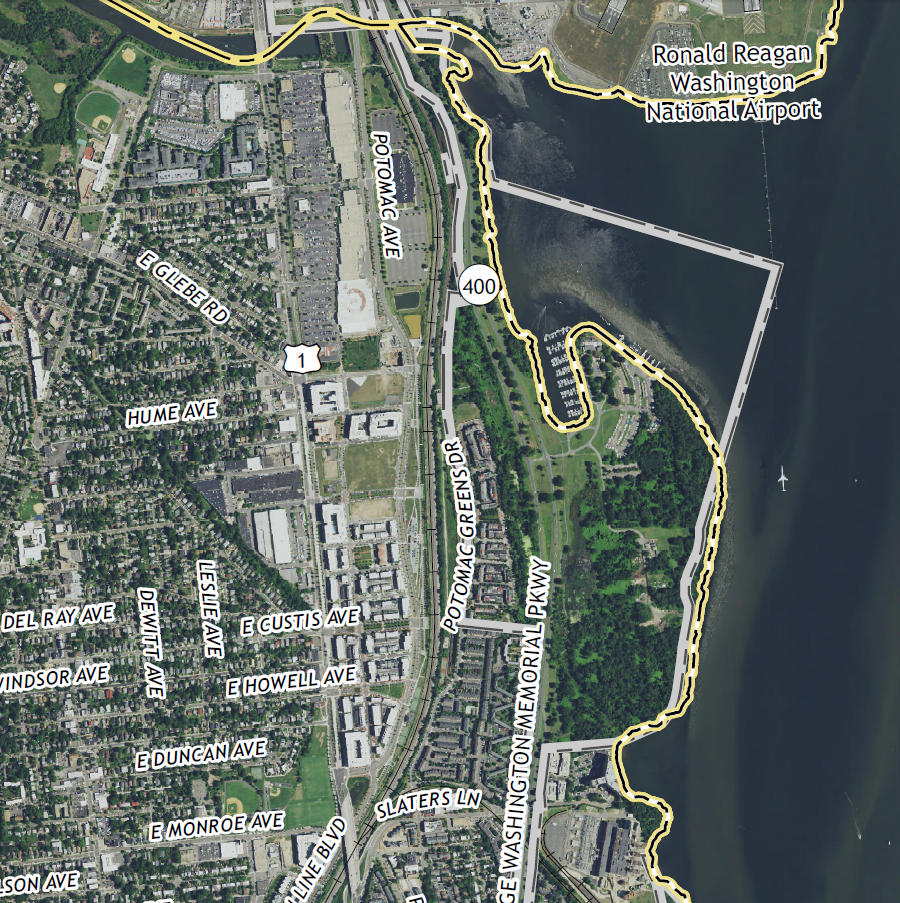
Potomac Yard in 2019
Source: US Geological Survey (USGS), Alexandria, VA 1:31.680 topographic quadrangle (2019)
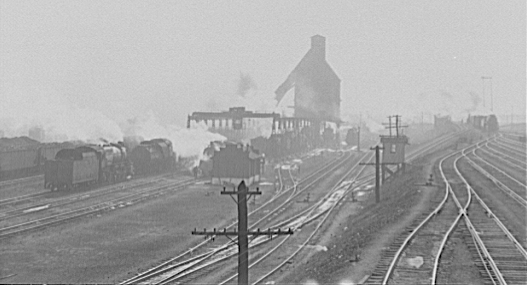
Potomac Yard
Source: Library of Congress, Railroad yards. Potomac Yards in Alexandria, Virginia I
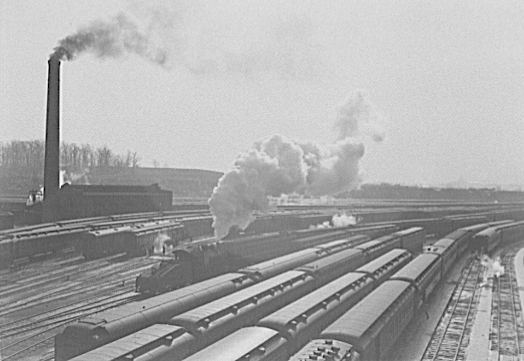
steam locomotives in Potomac Yard
Source: Library of Congress, Railroad yards. Potomac Yards in Alexandria, Virginia II
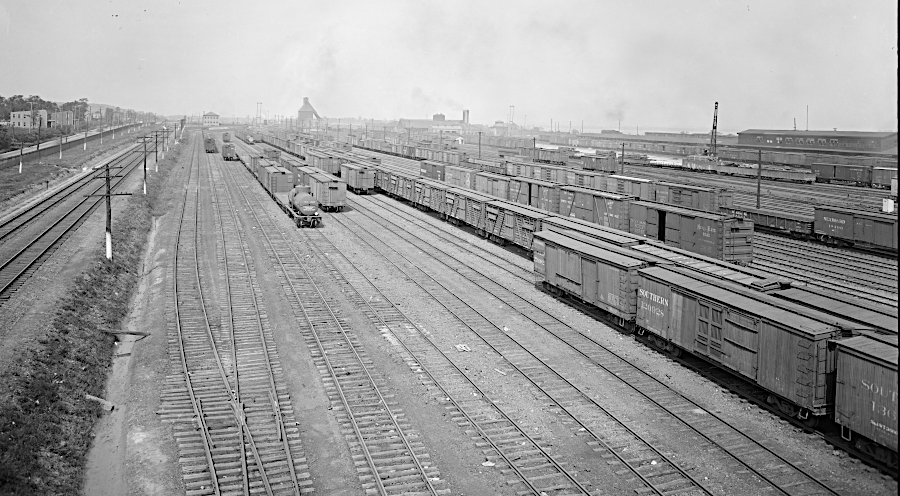
Potomac Yard, 1916-17
Source: Library of Congress, Keefer, Potomac Yards, Alexandria, Va.
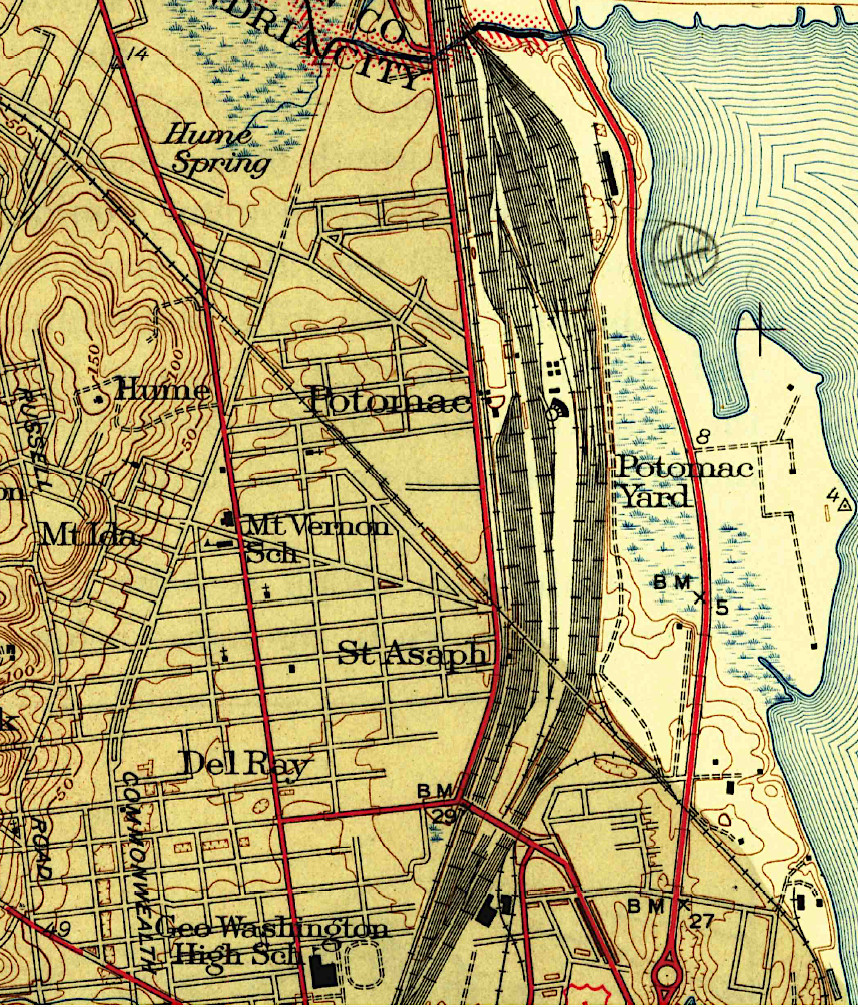
Potomac Yard at the end of World War II
Source: US Geological Survey (USGS), Alexandria VA 1:31,680 topographic quadrangle
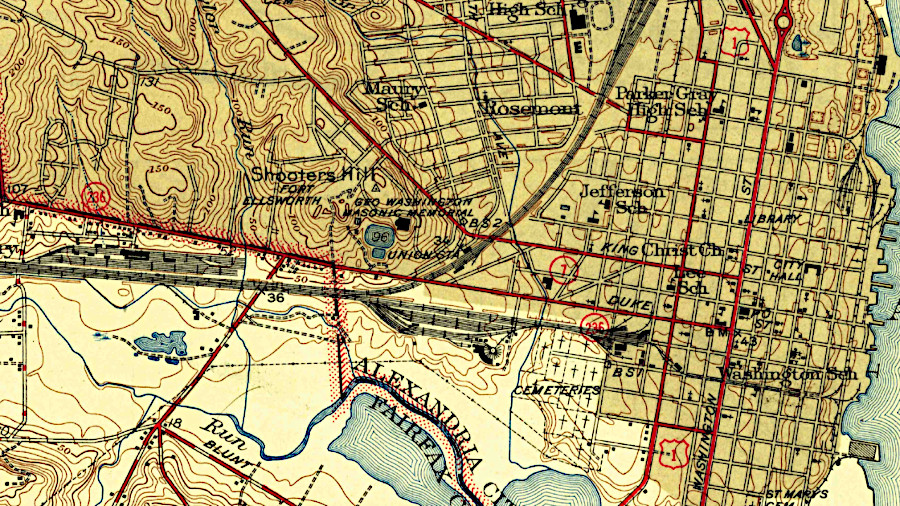
Cameron Yard was also in operation at the end of World War II
Source: US Geological Survey (USGS), Alexandria VA 1:31,680 topographic quadrangle
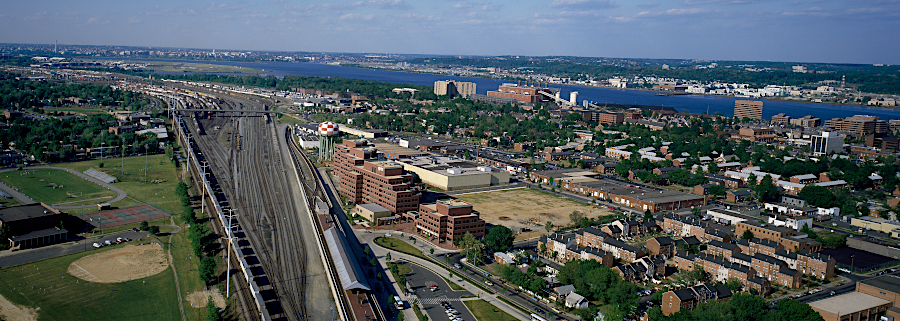
Potomac Yard before it was converted to mixed use development
Source: Library of Congress, Train tracks in Alexandria, Virginia looking towards Washington, D.C., in the far distance